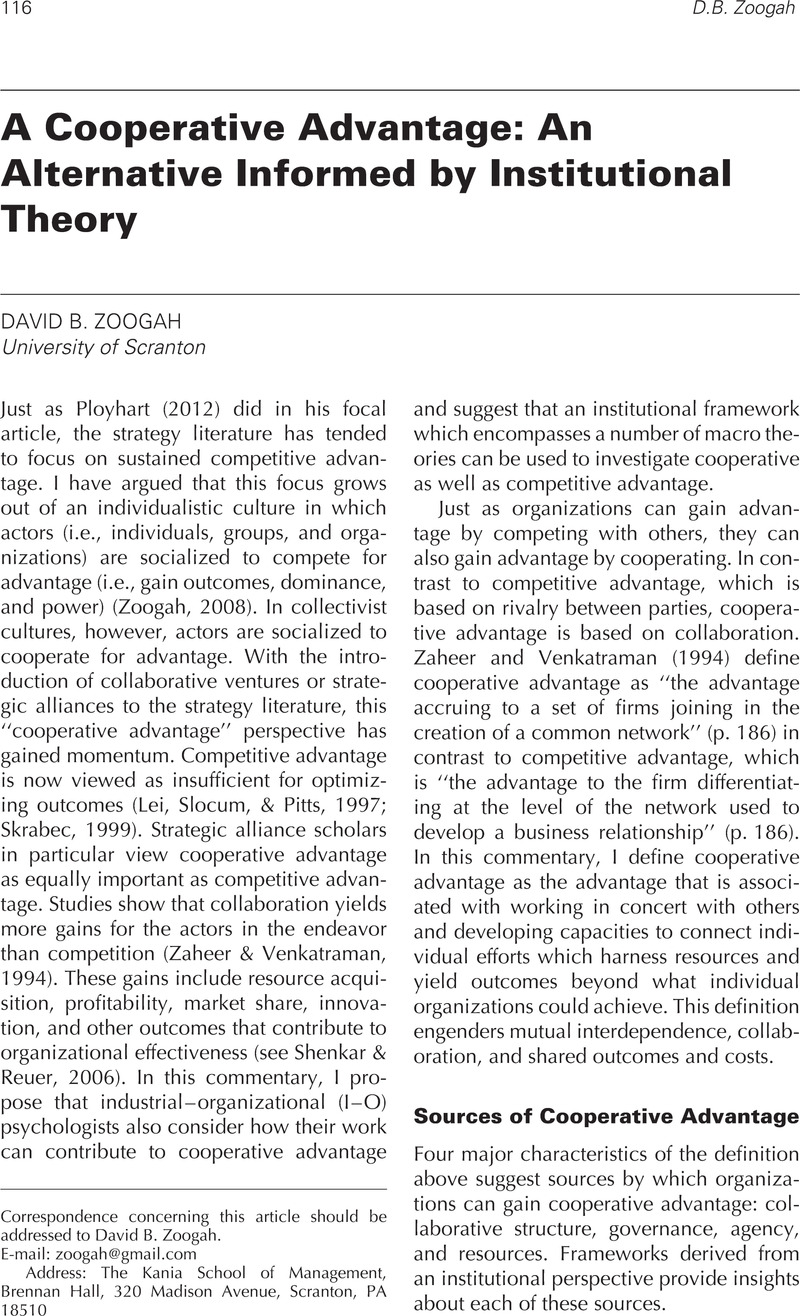Crossref Citations
This article has been cited by the following publications. This list is generated based on data provided by Crossref.
Ployhart, Robert E.
2012.
From Possible to Probable: The Psychology of Competitive Advantage.
Industrial and Organizational Psychology,
Vol. 5,
Issue. 1,
p.
120.
Acquaah, Moses
Acquaah, Moses
Zoogah, David B.
and
Kwesiga, Eileen N.
2013.
Advancing Africa through management knowledge and practice: the way forward.
African Journal of Economic and Management Studies,
Vol. 4,
Issue. 2,
p.
164.
Zoogah, David B.
and
Bolaji, M. H. A.
2014.
Global Leadership Practices.
p.
238.
Nkomo, Stella M.
Zoogah, David
and
Acquaah, Moses
2015.
WhyAfrica Journal of Managementand Why Now?.
Africa Journal of Management,
Vol. 1,
Issue. 1,
p.
4.
Lloyd, Robert
Mertens, Daniel
Adams, Ashley
Pruden, Christianna
and
Bates, Angela
2020.
Cooperative advantage during the pioneer movement west.
Journal of Management History,
Vol. 26,
Issue. 3,
p.
397.





